Karthika Masam – The Most Auspicious and Sacred Month
Karthika Masam:
It is a month long festival, starting just after Deepavali Amavasya where both Lord Shiva and Maha Vishnu are worshipped and prayed. The month begins from Aswayuja Suklapournami. It is most auspicious and sacred month for both Shaiva and Vaishnava followers. It is believed that offering prayers to “Shivakesavas” particularly in this month brings luck and prosperity. Karthika Masam is the favorite month to Lord Shiva amongst all other months.
Devotees observe karthika Masa Vratham and perform various customs and rituals. It is believed that following these rituals leads them to a good life and attain moksha. Upavasams are performed on every single Monday. Dhanams like vastradhanam, Swarnadhanam, ghodhanamto yield good results.
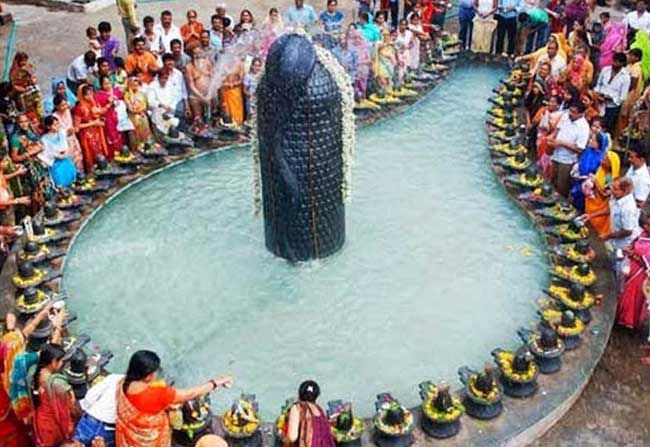 Cultural Beliefs:
Cultural Beliefs:
“Shivaya Vishnu Roopaya
Shiva Roopaya Vishnave…
Shivaya Hrudayam Vishnu
Vishnoscha Hrudayagum Shivah”
“Yathaa Shivamayo Vishnu
Evam Vishnu Maya Shivah”
Karthika Masam helps the devotee to understand and embrace the thought that there is no difference between Lord Vishnu and Lord Shiva and they both are one. We attain bliss when we worship them in one form. Important poojas observed are Ksheerabdhi dwadasi, Ekadasi, karthika deepam or karthika pournami Pooja, lighting lamps near sacred TulasiKota (plant) and doing Nitya poojas to goddess Tulasi and chanting Vishnu and Shivasahasranamams, chanting shiva stotras once in a day, Monday fastings and meditating to Lord Shiva. Due to “kaaladharmam”, and with our own regular life taking over us, we are finding it difficult to follow each and every ritual, mentioned in Karthika Puranam. But if we can at least practice few of the rituals and do simple Pooja, keeping our homes and mind clean and occupied by God’s chanting.
Lord Vishnu goes to sleep on Ashada Shuddha Ekadasi and wakes up on the Karthika Shuddha Ekadasi. During this time, Lord Shiva killed Tripurasuras on Karthika pournami day and protect the world from destruction. Karthika Masam notes that river Ganga merges into all rivers, ponds, canals, and wells and makes as pure as her (Ganga). During Karthika Masam, Ayyapa Deeksha is also taken and is observed till Makar Sankranthi.

Karthika Masam also Known as Damodar Masam:
It is a whole month festival and poojas are conducted and observed for the full month. People citing many reasons cannot perform for the whole month which is 30 days should at least observe prayers for a minimum of 10 days. They are initial starting five days of Karthik Masam and 5 days before pournima. These 10 days are very significant days. There is no sacred month like Karthik Masam, there is no God similar to Lord Vishnu and there is no scripture like Vedas and no river like Ganga, as per our Puranas.
Suta Mahamuni once told to the great sages:
“The month of Karthika is a sin destroying month and is gifted with divine power. Lord Vishnu’s is so dear to this month and he also grants both worldly wishes and also gives Moksha (Salvation).
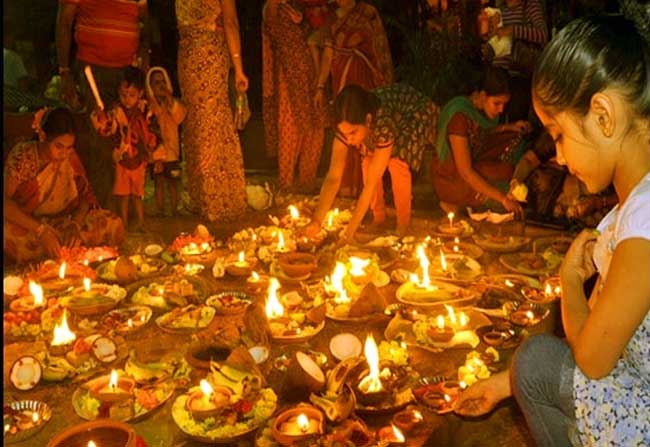 Rituals and Karthik Masam:
Rituals and Karthik Masam:
Japam:
Chanting the holy name of Lord Vishnu takes over to all other rituals. If anybody performs even few minutes of worship to Lord Shri Hari, he even grants his own abode as a blessing.
Deepa Dhanam (Offering oil Lamps):
Offering Lord Vishnu the oil lamps or deepams, flowers, your anger, food, etc. will yield immense spiritual benefits, especially when observed during the Karthik Masam.
The significance of Deepa dhanam is mentioned in Padma Puranam where a mouse, due to its hunger tried to eat ghee from the lamp offered to Lord Vishnu by devotees. But the ghee wick stuck to its teeth and since the wick had aflame, the mouse could not bear the heat and started jumping in- front of the Lord’s Deity idol and died due to the fire. But Lord Vishnu accepted the jumping of that mouse with a fire lit ghee wick in her mouth as “Aarathi” to him and he granted liberation which is the highest destination. Such is the greatness of Deepa Dhanam. Even a single lamp lit to the God in this month with devotion, destroys all sins piled by them equaling 1000 yugas. It is the best gift we can offer to God and the person who lights lamps with sesame oil (til) to Lord Shri Hari during Sandhya time is blessed with endless beauty, blessedness, unlimited prosperity and wealth.
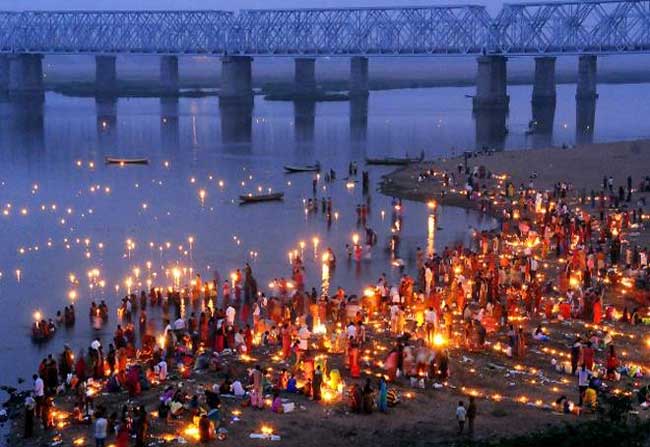 On the full moon day, in the Karthika Masam, on the rise of the star ‘Kritiga’, Hindus celebrate the Karthika Deepam. A huge beacon is lit on the holy hill ‘Arunachala’ located in South India.
On the full moon day, in the Karthika Masam, on the rise of the star ‘Kritiga’, Hindus celebrate the Karthika Deepam. A huge beacon is lit on the holy hill ‘Arunachala’ located in South India.
Annamalai Deepam:
Lord Shiva once asks Lord Brahma and Lord Vishnu to find where is head and feet are exactly located. He took a gigantic form hence they could not find the exact location. It is at this time, Lord Shiva takes the form of a Jyothi (light of fire) on the hill of ‘Thiruvannamalai’, where today they celebrate this festival as “Annamalai Deepam”. A special torch is lighted on the peak of the hill and it is believed that Lord Shiva’s Jyothi is visible on this day.
Nadi snanam (Bathing in Rivers):
Bathing in rivers in Karthika Masam is not only considered holy but also has significant scientific and medical benefits. Rivers receive fresh waters from the rainy season covering Shravan and Bhadrapada Masam’s and overflow banks, it is hence prohibited to take bath in rivers in those months. But the river totally settles with the start of Karthika Masam. In Sharad Ruthuvu, the moon plays an important role. This Ruthuvu covers both the Aswayuja and Karthika Masam. At this time, the river absorbs energy from the moon which we receive as we bathe in the rivers. Hence it is compulsory to take at least one dip during this month.
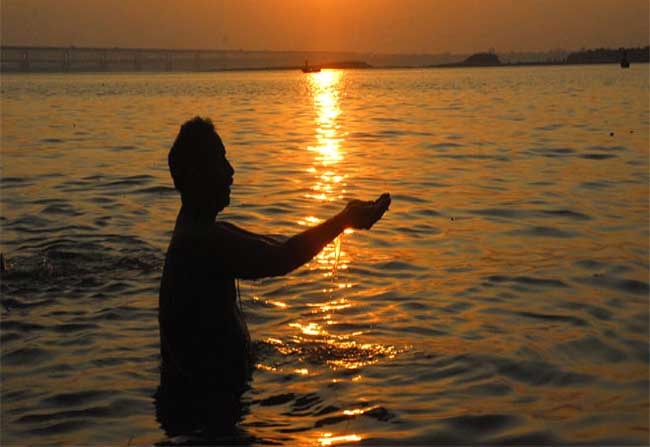 Apart from the above reason, another theory as per to science, water gets enriched with more Magnetic Power from Earth and the power is stored in water until sunrise. This is one of the main reasons our ancients insisted on “Nadi snanams” (River Baths) before sunrise. Magnetic Therapy believes that taking a dip in any flowing river waters on Karthika Somavaram (Monday) for about 15mins can bring relief from the stomach, and Liver disorders and also help maintain good general health.
Apart from the above reason, another theory as per to science, water gets enriched with more Magnetic Power from Earth and the power is stored in water until sunrise. This is one of the main reasons our ancients insisted on “Nadi snanams” (River Baths) before sunrise. Magnetic Therapy believes that taking a dip in any flowing river waters on Karthika Somavaram (Monday) for about 15mins can bring relief from the stomach, and Liver disorders and also help maintain good general health.
List of Festivals in Karthik Masam and their Meaning:
Yama Vidhiya is the first festival celebrated in Karthik Masam. We also call it ‘Bhagini Bhojanam’, also known as a brother-sister festival. Once, Lord Yama’s sister Yami (Yamuna Devi) was upset on her brother, to which he grants a boon to her. On the day of ‘Yama Vidhiya’ whoever eats food in their sister’s home will be relieved of sins and would not be facing torture in hell. This ritual is still in practice and brothers come and eat in their sister’s house and gives/receives blessings.
It is an auspicious festival to observe Naga Puja. It comes on the fourth day after Deepavali Amavasya. Nag Panchami and Nagasashti are also performed after Nagula Chavithi. It is a festival of serpent Gods and is mainly done by women. It is observed by married women for the wellbeing of their children. They keep fast and perform Naga puja. Devotees offer milk, and fruits and offer Arthis near the putta(snake pits). Seven hooded cobra, an ‘Ashtanag’ is specially worshipped.
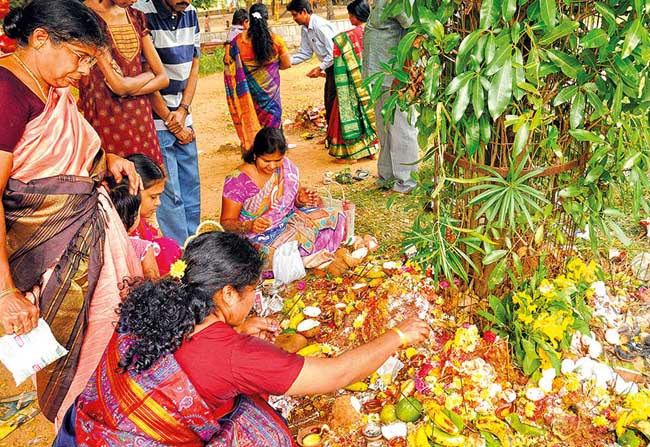
-
Karthika Ekadasi- Fasting:
Ekadasi fasting in Karthika Masam is a common procedure in every household.Lord Vishnu goes to sleep on Ashada Shuddha Ekadasi and wakes up on the Karthika Shuddha Ekadasi in ksheeraSamudra. People fast whole day and break their fast next day offering food and clothes to a Brahmin or Temple Priest.
On this day, Ladies in their house, offer prayers to Lord Vishnu keeping 12, 16, 21deepams near the Tulasi Plant with Usiri plant (gooseberry/Amla) in it.These deepams are called as Dwadasa deepams. One can see an amazing site as every house gleams vibrantly with lots of diyas.
In Karthika Masam, Pournami that comes in Krithika Nakshatra (Star) is called as Karthika Pournami. Fasting on Karthika Pournami day is equivalent to fasting on Shiva Rathri.Devotee’s fast whole day. They light a 365 vatthula (cotton wicks) deepam to Lord Vishnu, have Darshan of the Moon and then only break their fast. Newly married woman conducts 33 pournami
vratham/ noomu and on the evening, go to shivalayas and offer goddess Parvathi a big pumpkin fruit, Yam fruit, among other items including food.
The last of Karthika Masam, after Amavasya, Poli Swargam Pooja’s are performed. The temple priest reads out the story and they are offered Vayanalu and swayampakalu. Deepam’s are kept on banana ribs or stem and are left in the lakes or canals. With this festival, Karthika Masam officially comes to an end.
Karthika masa somavaravratham and its glory:
Lord Shiva blessed us with a great boon as Karthika masa somavara vratham. One who performs with diligence would enjoy every worldly pleasure and even after death, he would reach Kailash. Reaching Kailasha means attaining salvation or shiva lokam or moksha.
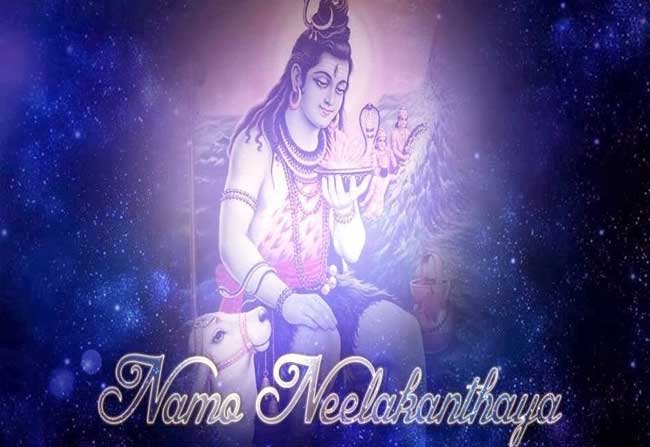
Let me explain few basic rituals one should follow in this karthika parwa:
- It is important to avoid non-vegetarian for the whole month.
- Do not eat foods like onions, brinjal, and garlic. Take any veg diet.
- Feeding is considered auspicious, Lord Shiva gets pleased when we feed cows in this month.
- Eat meals only once for a month. We can eat light foods like fruits or tiffins at night.
- Follow the fasting pattern on other days like Karthika pournima, Kotisomavaram, and Mondays.
- Take ahead bath every day.
- Lighting Deepam’s to Lord Shiva on the evenings is compulsory.
- Prepare prasadam to Lord on all days of the month as the whole month is considered divine.
- Spend time with God, read one chapter of Shiva Mahapuranam and Vishnu saharanamams every day.
Koti somavaram Vratham:
It is observed in ‘Shraavana Nakshatram’ which usually comes on pournami day in Karthika Masam.Rudrabhishekam, abhishekamand Lighting lamps to Goddess Parvathi and Lord Shiva is highly auspicious and will free the devotee of all the sins and keep them happy and free them from all diseases. Performing Rudrabhishekam on this day 11 times will take you straight to Kailasam. Another name for Lord Shiva is Someswara, who keeps the soma (crescent Moon) on his matted hair. Fasting to both Lord Vishnu and Lord Shiva will surely fetch you Moksha. It is said in Hindu scriptures that Karthika Masam is a sin destroying month.
Satya Narayana Swamy vratham:
Satya Narayana Swamy gives his divine blessings if we conduct this vratham during this month. It is one of the easiest and best ways to be near him. Lord Vishnu, the Bhagwan who is responsible for maintenance of our universe. This vratham is always performed right after our wishes or desires get fulfilled. Morning or evening, any time is auspicious to perform this vratham. He helps us achieve major achievements in life. People want to invite all near and dear ones and share their happiness with them. It is of course very happy moment for family organizing it, but it is also auspicious to invite guests and feed them prasadam after the Pooja is finished. The story is the most important part in this vratham and a must to hear by one and all.
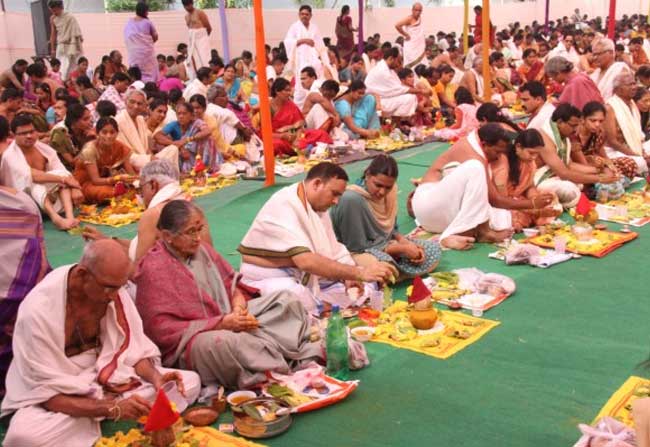
Paitha Mahakruchcha vratham:
It is a five day ritual which is observed in Karthika Krishna Paksha in the southern states, like Andhra and Telangana, and even Karnataka. The Vratham starts on Karthika Krishna Saptami and ends on Karthika Krishna Ekadasi. During these five days Lord Vishnu is worshipped and people fast and on the fifth day of Uttuvana Ekadasi, they break their fast and immediate next day they celebrate the Tulsi vivaham with Lord Vishnu. It is always advisable to eat some light food like fruit or milk during fasting.
Nattalu or Natta Vratham:
The process of observing Nattalu vratham is too fast whole day and eat only after moon comes out and stars are seen. It is done almost all month of Karthika Masam. If this routine is done throughout the month it is called Nattalu or Natta Vratham.

Conclusion Remarks:
I thank all my readers for their patience in reading my long article. I tried my best to put all important information about rituals observed during the Karthika Masam. Hope you had a happy and informative reading! TELUGUBULLET wishes one and all one more time a very happy and auspicious Karthika Masam.
Please do visit us again for another beautiful topic that you can keep in your hearts!
Om Namah Shivaya!!
Sija.
Posted [relativedate] at [relativetime time_format=”H:i”]
For More Interesting News:
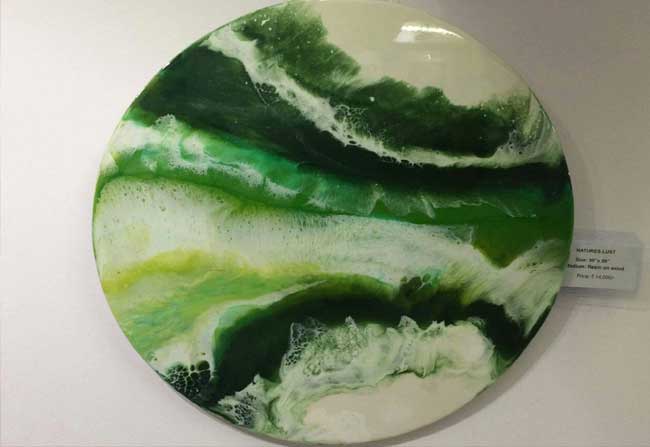
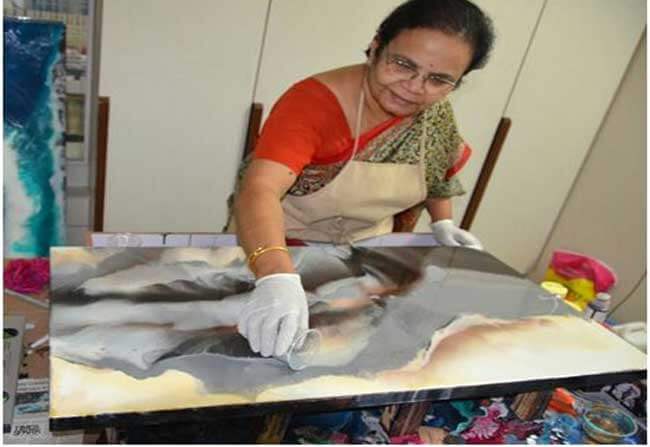




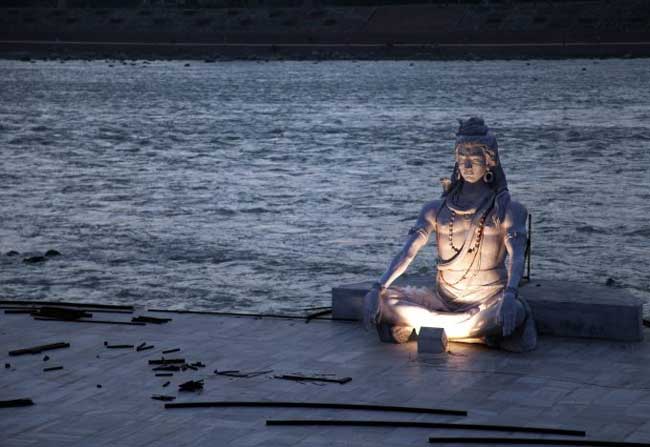
 Cultural Beliefs:
Cultural Beliefs:
 Rituals and Karthik Masam:
Rituals and Karthik Masam: On the full moon day, in the Karthika Masam, on the rise of the star ‘Kritiga’, Hindus celebrate the Karthika Deepam. A huge beacon is lit on the holy hill ‘Arunachala’ located in South India.
On the full moon day, in the Karthika Masam, on the rise of the star ‘Kritiga’, Hindus celebrate the Karthika Deepam. A huge beacon is lit on the holy hill ‘Arunachala’ located in South India. Apart from the above reason, another theory as per to science, water gets enriched with more Magnetic Power from Earth and the power is stored in water until sunrise. This is one of the main reasons our ancients insisted on “Nadi snanams” (River Baths) before sunrise. Magnetic Therapy believes that taking a dip in any flowing river waters on Karthika Somavaram (Monday) for about 15mins can bring relief from the stomach, and Liver disorders and also help maintain good general health.
Apart from the above reason, another theory as per to science, water gets enriched with more Magnetic Power from Earth and the power is stored in water until sunrise. This is one of the main reasons our ancients insisted on “Nadi snanams” (River Baths) before sunrise. Magnetic Therapy believes that taking a dip in any flowing river waters on Karthika Somavaram (Monday) for about 15mins can bring relief from the stomach, and Liver disorders and also help maintain good general health.



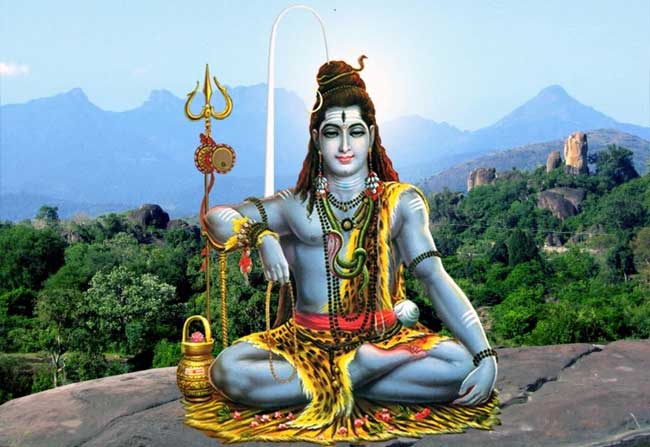
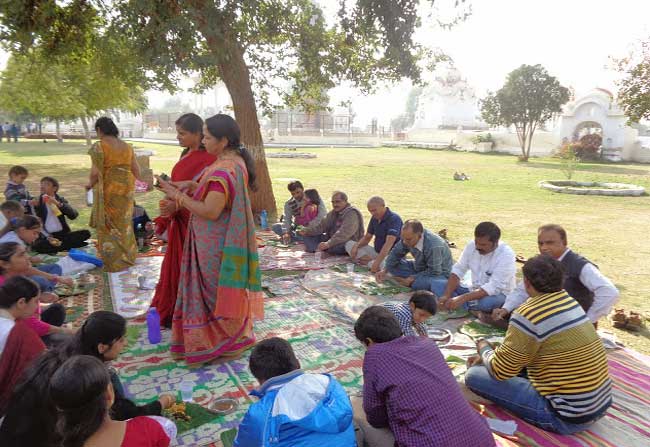 Traditionally people cook food under the Amla tree, and after offering prayers consume the food as prasadam. The sight of an Amla plant was a common thing in the backyard of every house. In the ancient times, Vanabhojam’s foremost intention was ‘Satkalakshepam’, spending time worshiping ‘suras’ (deities), in a righteous and noble manner. These outings were mainly dedicated to ‘Purana Parayanam’ i.e. reading the Holy Scriptures, an activity observed for concentration, dedication and contemplation of the individual soul to God.
Traditionally people cook food under the Amla tree, and after offering prayers consume the food as prasadam. The sight of an Amla plant was a common thing in the backyard of every house. In the ancient times, Vanabhojam’s foremost intention was ‘Satkalakshepam’, spending time worshiping ‘suras’ (deities), in a righteous and noble manner. These outings were mainly dedicated to ‘Purana Parayanam’ i.e. reading the Holy Scriptures, an activity observed for concentration, dedication and contemplation of the individual soul to God.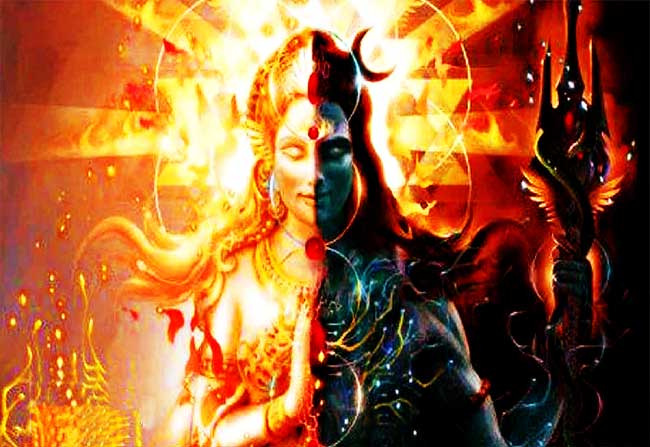 He got confused, thinking whether they are all offering their salutations to him or to Lord Shiva. It slowly developed ego (Aham). His thoughts became narrow, making him negative. The snake thought people are so foolish to wait for years together to get a glimpse of the Lord.It thought, having embellished the Lord for so many ages now, it must be greater than the God.
He got confused, thinking whether they are all offering their salutations to him or to Lord Shiva. It slowly developed ego (Aham). His thoughts became narrow, making him negative. The snake thought people are so foolish to wait for years together to get a glimpse of the Lord.It thought, having embellished the Lord for so many ages now, it must be greater than the God.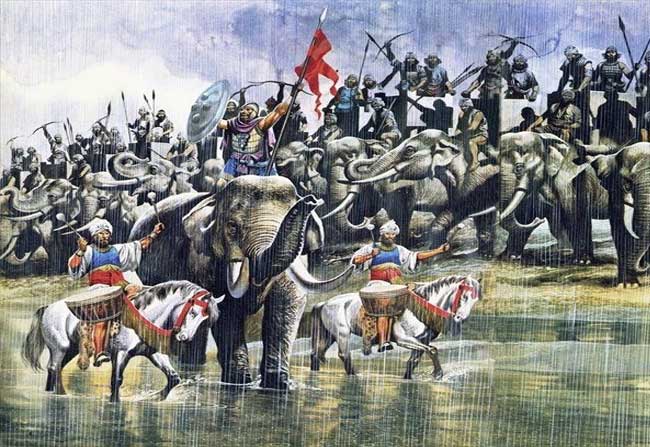
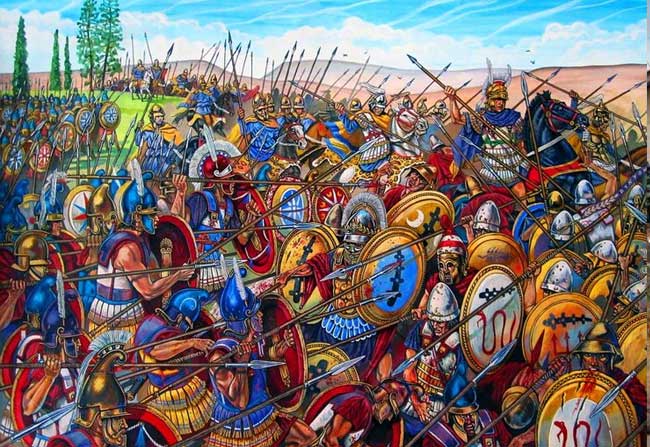
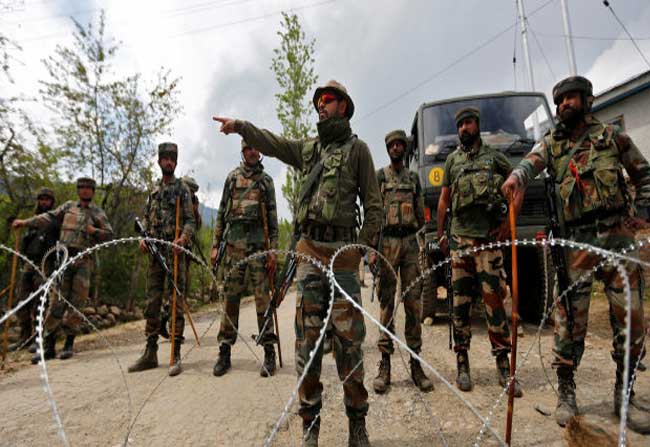 With traumatic events taking place within Alexander’s army and generals, few soldiers decided to stay back in a fear that they would be put to mass killing on the way to Macedonia. These soldiers over millenniums gradually moved towards the south, where they are known to have finally settled. Coorg in Karnataka is often identified where most of the Greek soldiers have settled, and coincidentally, the first two Army Generals of Republic India are from this region. There are many notable personalities from Coorg who served Indian Forces at the highest level.
With traumatic events taking place within Alexander’s army and generals, few soldiers decided to stay back in a fear that they would be put to mass killing on the way to Macedonia. These soldiers over millenniums gradually moved towards the south, where they are known to have finally settled. Coorg in Karnataka is often identified where most of the Greek soldiers have settled, and coincidentally, the first two Army Generals of Republic India are from this region. There are many notable personalities from Coorg who served Indian Forces at the highest level.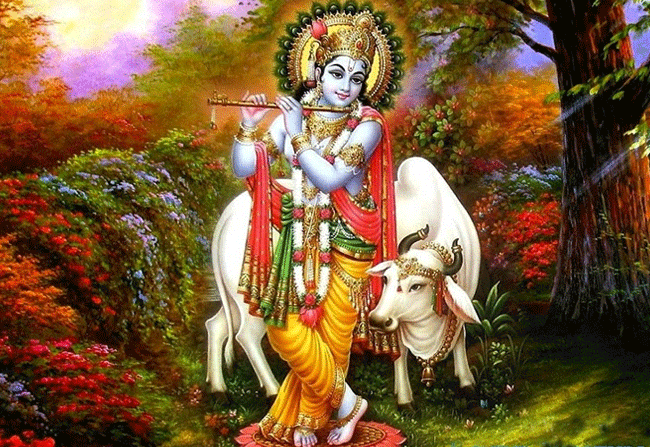
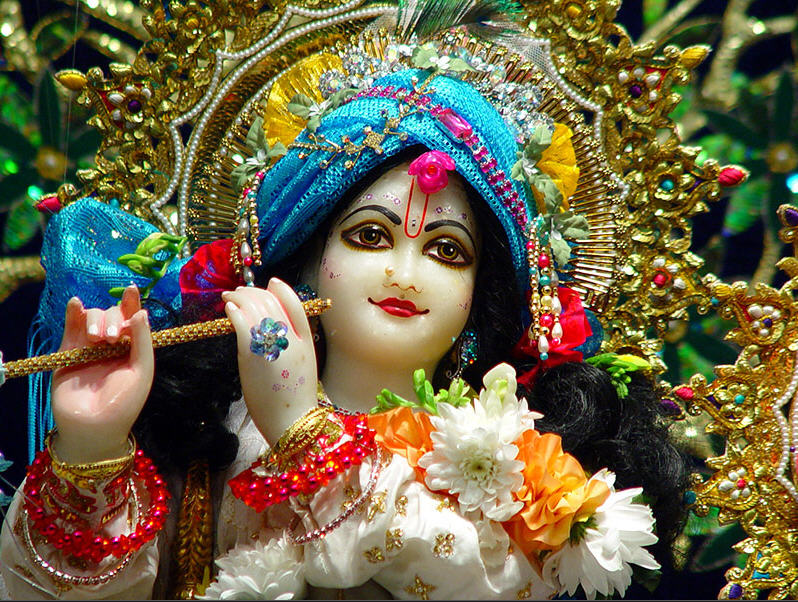 The greatest epic and holy book in Hindutva, the Mahabharatha itself is a testimony to the existence of Lord Krishna, and everything narrated in it. As many as 150 celestial events that were mentioned during the Kurukshetra war, did match in the chronological order described in Mahabharatha when a series of simulation and astronomical analysis were carried. In the midst of research globally, few sections of Indian Science Community has made noble efforts to establish that, Lord Krishna was born on 21st July 3228, and breathe last on 18th February 3102 (Julian Calendar).
The greatest epic and holy book in Hindutva, the Mahabharatha itself is a testimony to the existence of Lord Krishna, and everything narrated in it. As many as 150 celestial events that were mentioned during the Kurukshetra war, did match in the chronological order described in Mahabharatha when a series of simulation and astronomical analysis were carried. In the midst of research globally, few sections of Indian Science Community has made noble efforts to establish that, Lord Krishna was born on 21st July 3228, and breathe last on 18th February 3102 (Julian Calendar).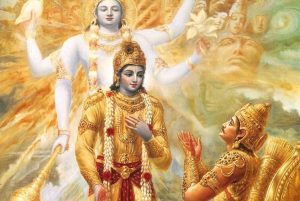
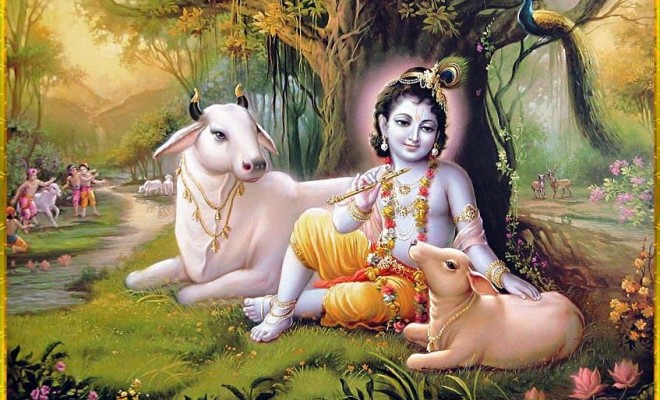 Tablet-like archaeological material found near the Mohenjo-Daro sites were dated back to 2600 BCE. These table-like findings had descriptions about an iconic figure resembling Lord Krishna. And other archaeological material found at the sites clearly supported that Krishna and the whole Mahabharata was factual. Likewise, the Greek records also make a note of Heracles (Krishna) who lived 138 generations before Alexander and Sandrocottas. Recorded history shows that Alexander and Sandrocottas (Chandragupta Maurya)lived around the 330 BCE. Taking 20 years as a median for each generation, Heracles is known to be existing around the 3090 BCE, an era which also coincides with the existence of Lord Krishna.
Tablet-like archaeological material found near the Mohenjo-Daro sites were dated back to 2600 BCE. These table-like findings had descriptions about an iconic figure resembling Lord Krishna. And other archaeological material found at the sites clearly supported that Krishna and the whole Mahabharata was factual. Likewise, the Greek records also make a note of Heracles (Krishna) who lived 138 generations before Alexander and Sandrocottas. Recorded history shows that Alexander and Sandrocottas (Chandragupta Maurya)lived around the 330 BCE. Taking 20 years as a median for each generation, Heracles is known to be existing around the 3090 BCE, an era which also coincides with the existence of Lord Krishna.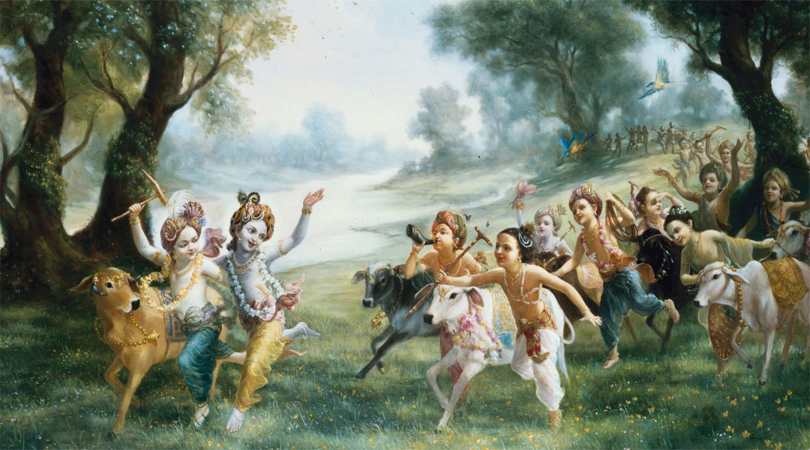 Post the Kurukshetra war, Lord Krishna paid a visit to Gandhari and Dhritarashtra. On seeing Lord Krishna, Gandhari who is already filled with immense grief and sorrow held Krishna responsible for the Kurukshetra war. ‘You were the Almighty, and you knew what was going to happen. Yet you made no efforts to stop it. I and my husband prayed for you, as Vishnu. If my devotion towards is true, you and your entire Yadav clan would be wiped away from the face of this earth and Dwaraka would be submerged in 36 years. You would pay for your deeds,’ cursed Gandhari. The Paramatma, looked at her smiled, only to draw more fear and anguish from Gandhari.
Post the Kurukshetra war, Lord Krishna paid a visit to Gandhari and Dhritarashtra. On seeing Lord Krishna, Gandhari who is already filled with immense grief and sorrow held Krishna responsible for the Kurukshetra war. ‘You were the Almighty, and you knew what was going to happen. Yet you made no efforts to stop it. I and my husband prayed for you, as Vishnu. If my devotion towards is true, you and your entire Yadav clan would be wiped away from the face of this earth and Dwaraka would be submerged in 36 years. You would pay for your deeds,’ cursed Gandhari. The Paramatma, looked at her smiled, only to draw more fear and anguish from Gandhari.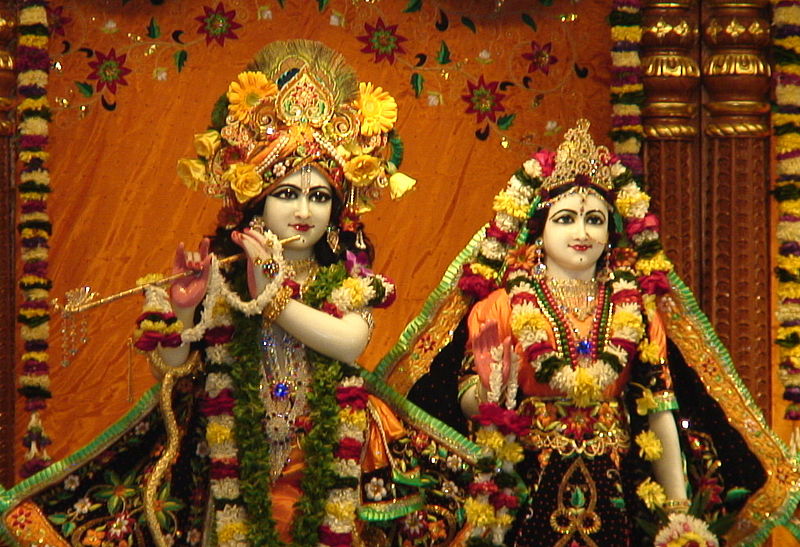 Samba, son of Krishna and Jambavati became pregnant after a group of sages cursed him for his mischievous acts. He delivered a mace, which later played a major part in wiping out Yadav Clan. To add this, Krishna’s Sudarshan Chakra, the Panchajanya Shanka, and Balarama’s plough suddenly disappeared, as if into thin air.The kingdom of Dwaraka has seen infectious diseases being spread, and people committing sinful acts. Knowing all this, Krishna smile and asked Arjuna to take care of Dwaraka, and left in search of his brother Balarama. As Lord Krishna, left Dwaraka, a gigantic wave gulped the whole city into the ocean’s womb.
Samba, son of Krishna and Jambavati became pregnant after a group of sages cursed him for his mischievous acts. He delivered a mace, which later played a major part in wiping out Yadav Clan. To add this, Krishna’s Sudarshan Chakra, the Panchajanya Shanka, and Balarama’s plough suddenly disappeared, as if into thin air.The kingdom of Dwaraka has seen infectious diseases being spread, and people committing sinful acts. Knowing all this, Krishna smile and asked Arjuna to take care of Dwaraka, and left in search of his brother Balarama. As Lord Krishna, left Dwaraka, a gigantic wave gulped the whole city into the ocean’s womb.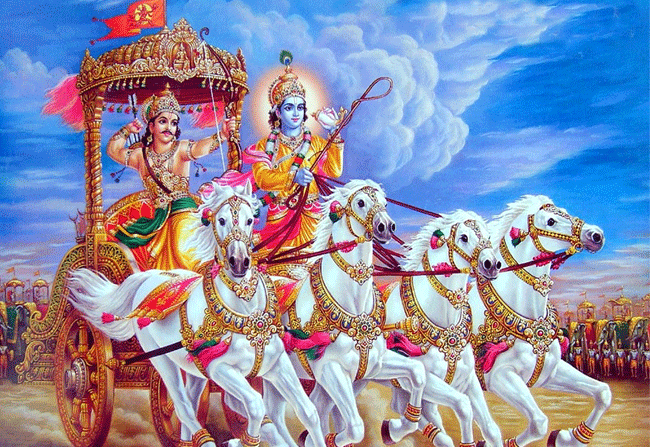 Realizing his mistake, the hunter, (who was Vaali in Treta Yuga), pleaded for forgiveness and refused to leave Krishna. But Krishna stated that it is just Karma siddhantha that prevailed, and his death was rightly deserved. ‘I killed you from behind in Treta Yuga as Rama,’ said Krishna to the hunter. Later, Krishna left his bodily form and left to the abode, where Adiseshu was already waiting for him.
Realizing his mistake, the hunter, (who was Vaali in Treta Yuga), pleaded for forgiveness and refused to leave Krishna. But Krishna stated that it is just Karma siddhantha that prevailed, and his death was rightly deserved. ‘I killed you from behind in Treta Yuga as Rama,’ said Krishna to the hunter. Later, Krishna left his bodily form and left to the abode, where Adiseshu was already waiting for him.